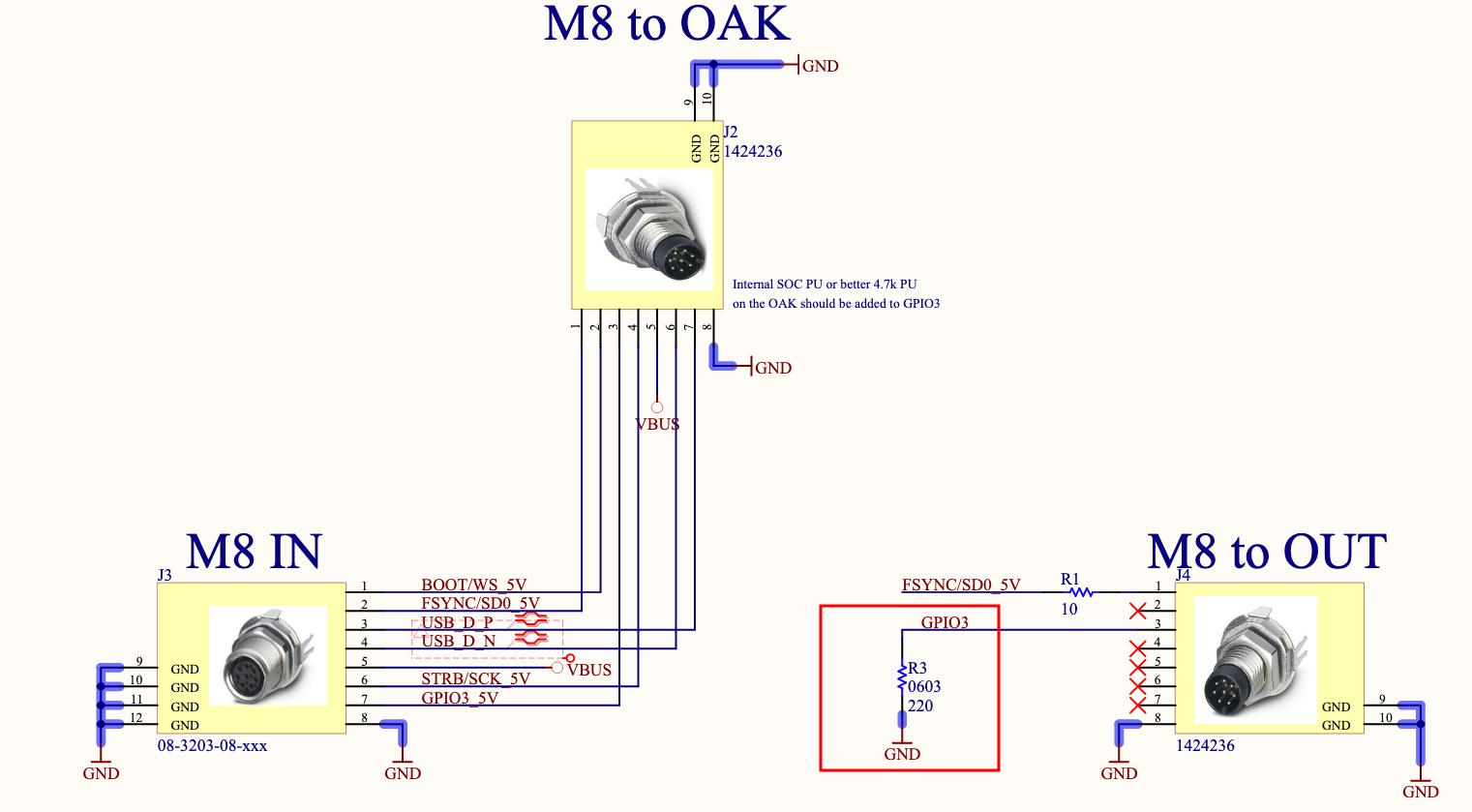Dear Luxonis Hardware Experts,
We have the need of hardware syncing of multiple OAK FFC 4P based stereo cameras and we do not know when the FSYNC Y adapter would be released. Therefore, we would like to prototype ourselves the adapter for purpose of daisy-chaining : there would be one camera acting as master providing trigger signal, other acting as slaves.
However, I am not quite clear about the functionality of the GPIO3 in the following description of the BNC to M8 adapter :
We made our own BNC to M8 adapter by splitting one BNC to BNC cable and one M8 to M8 cable. We then used that to connect the signal generator (BNC) to the FSYNC Y-adapter (M8).
The signal line (BNC core) has to be connected to pin 1 of the M8 cable (FSYNC line). GND from the BNC connector (so the shielding around it) has to be connected to both pin 3 (GPIO3/5V) and pin 8 (GND) of the M8 cable. If GPIO3 is not connected to the ground, the camera on the first FSYNC Y-adapter won’t work, only the cameras after it will be synced together. This is because the first FSYNC Y-adapter will pull the GPIO3 to GND, as seen in the schematics below.

I would like to know if the GPIO3 is used to detect by the connected OAK camera in order to identify itself as master or slave ?
Thanks in advance and best regards,
Khang